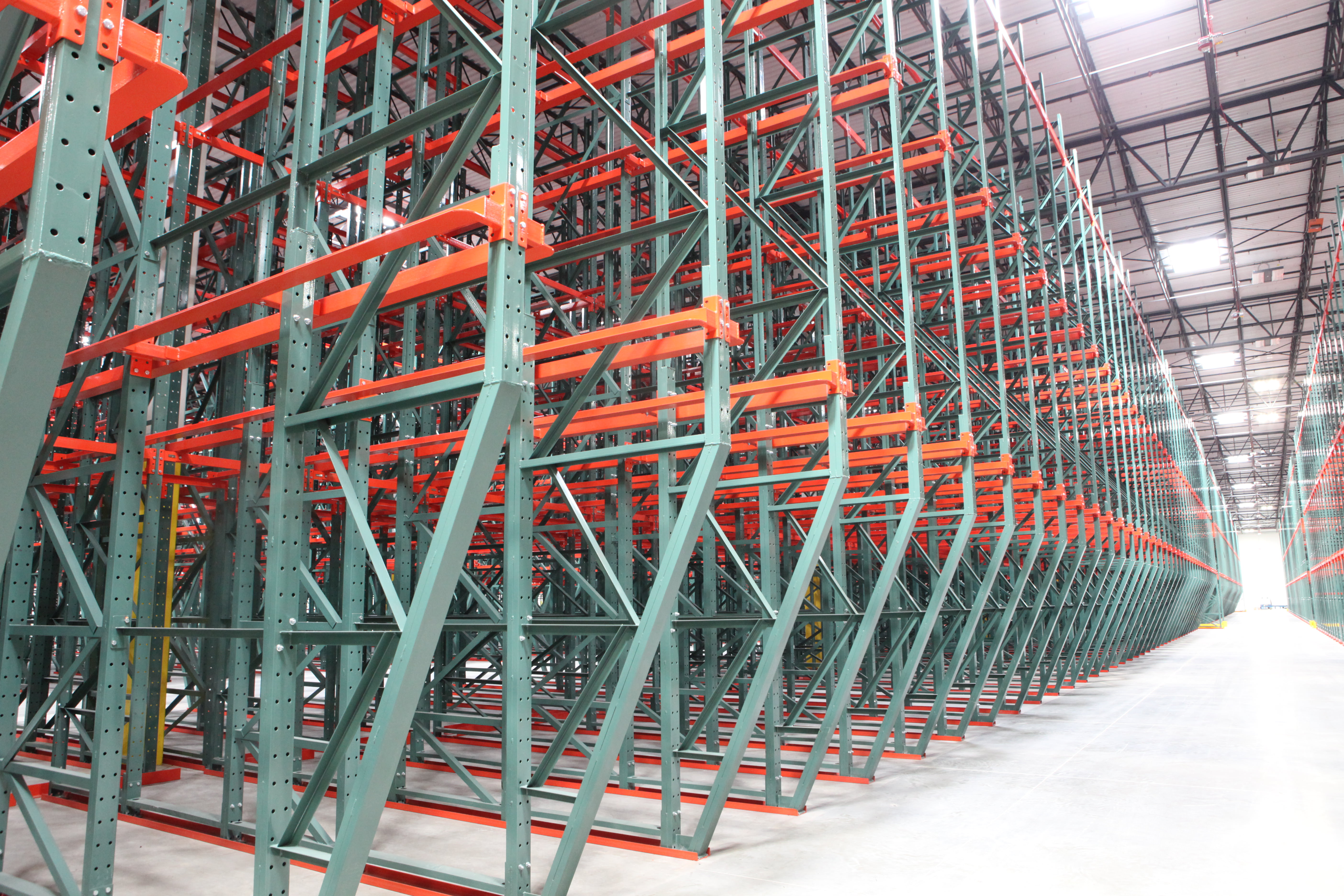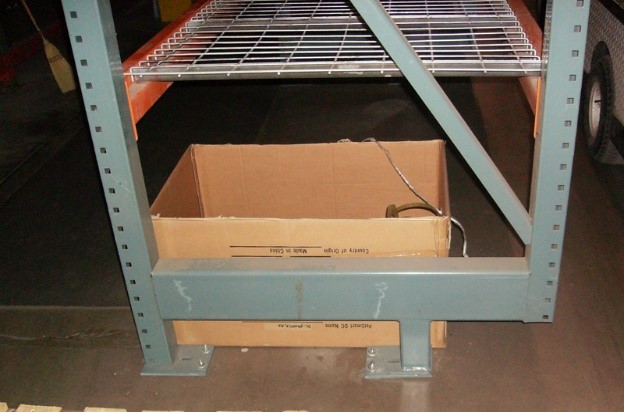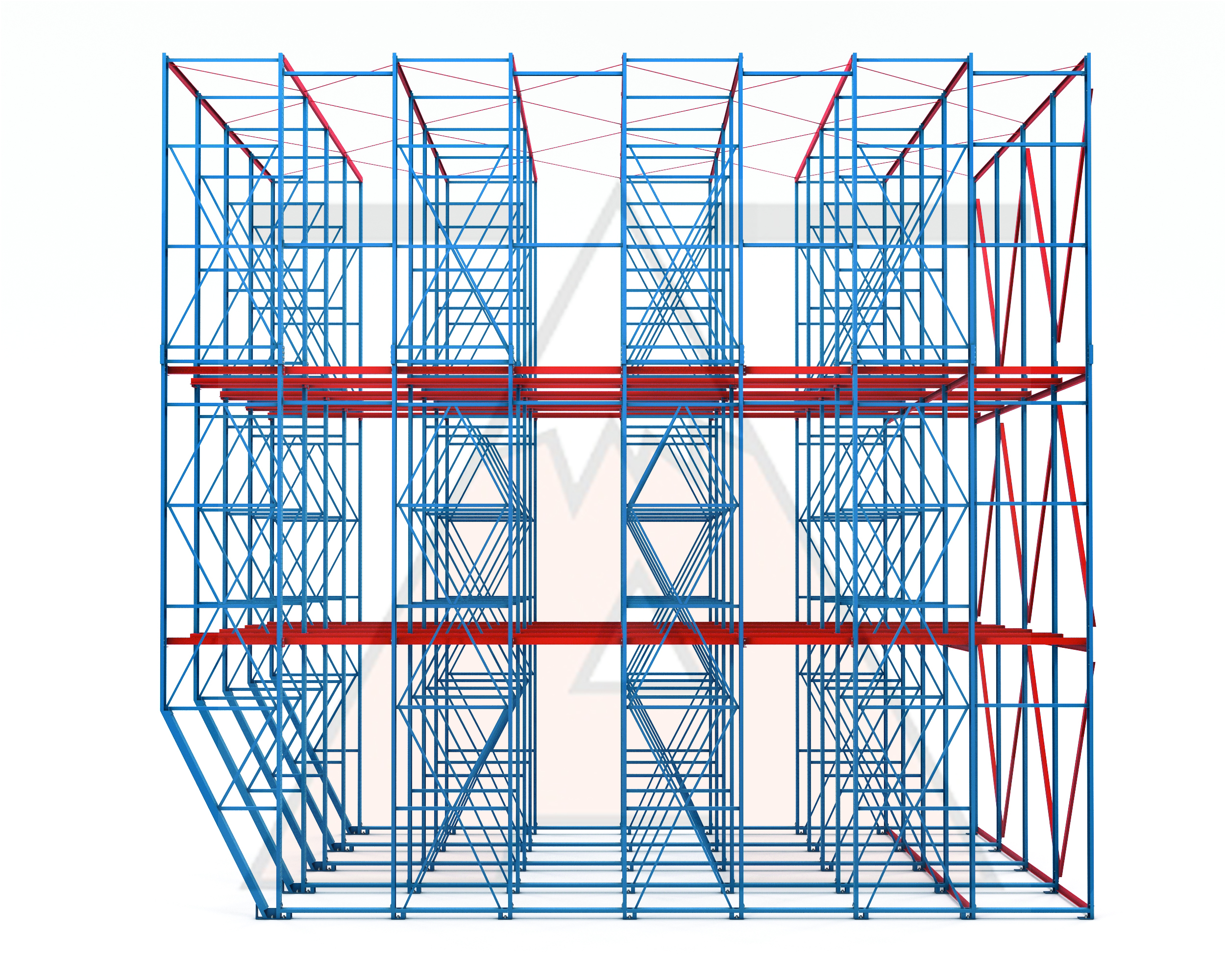…And Which Should I Choose?
If you’re familiar with pallet rack storage solutions, you’ve likely heard of the sloped leg, recessed, and cant-leg frame, or maybe the offset or set-back frame design… confused yet? We hear you…. even industry veterans use these terms interchangeably, yet, these terms actually describe unique pallet rack frame options though they serve a similar purpose.

The main characteristic of the cant leg (also known as the offset or set-back frame) and slope leg is the recessed design of the lower section of the front column of the pallet rack frame. The purpose is to provide greater forklift clearance at the aisle face where the impact risk is highest.
Here are some of the added benefits…

Front Column Forklift Damage
Benefits and Features of Recessed Frame Design
- Reduces forklift frame damage
- Provides wider travel lanes in aisles
- Maintains total storage capacity
- Reduces rack maintenance costs
- Increases warehouse safety
- Can be retrofit to existing rack
- Works in selective, drive-in, and push-back systems
We easily see the feature differences when looking at the two designs, but what do those differences mean for your storage systems and warehouse operation? Here’s a basic review of the two systems to help you determine which might be the right pallet rack design for your storage and fulfillment needs.
Frame Designs
 Offset/Cant-Leg Frame
Offset/Cant-Leg Frame
Features include a sharply recessed front post at a 90° angle to the rear post. The height and depth of the offset are varied depending on the system application. Unique to this design is the ability to set the offset to sit as low as 6” off the floor to avoid forks and still allow for an additional lower beam/pallet level. The 90° offset provides an easier visual for forklift drivers to gauge clearance.
There are a couple of drawbacks to the cant leg – it can be more expensive to engineer due to the difficulty of managing the transfer of forces from the frame to the floor. For this same reason, the extent of the recess is typically limited to a little more than half the depth of the frame.
Slope Leg
 This frame design is easily identified by the gentle slope of the front column toward the rear column of the frame. The slope angle is based upon rack dimensions and capacity requirements but can extend as far back as the base of the rear column. Slope-leg frames are often used in drive-in/drive-through pallet rack systems because forklifts actually enter the pallet lane when loading and extracting inventory. Slope leg columns can be designed for greater capacity than straight leg columns.
This frame design is easily identified by the gentle slope of the front column toward the rear column of the frame. The slope angle is based upon rack dimensions and capacity requirements but can extend as far back as the base of the rear column. Slope-leg frames are often used in drive-in/drive-through pallet rack systems because forklifts actually enter the pallet lane when loading and extracting inventory. Slope leg columns can be designed for greater capacity than straight leg columns.
Slope leg posts can also serve as rack repair replacements for straight leg posts where additional fork clearance is needed. Apex rack repair PROs can often make repairs without unloading the entire system, saving you expensive system downtime losses.
A design limitation with the sloped frame is that the lowest beam elevation must be higher than the start of the slope on the frame. It can be more difficult for the forklift driver to gauge the rack clearance vs. the cant-leg design due to the gradual slope.
Raised I-Beam

The Raised I-Beam base design is a third option, which elevates the product off the floor and still provides additional clearance for the forklift forks by removing the front column. The pros and cons of this system design are outlined below:
Raised I-Beam Design Pros
|
Raised I-Beam Design Cons
|
Call the Apex team if you’re interested in learning more about pallet rack systems and optional frame designs. We are a full-service material handling design, integration, automation, installation, and equipment supplier, and we look forward to the opportunity to work with you.

